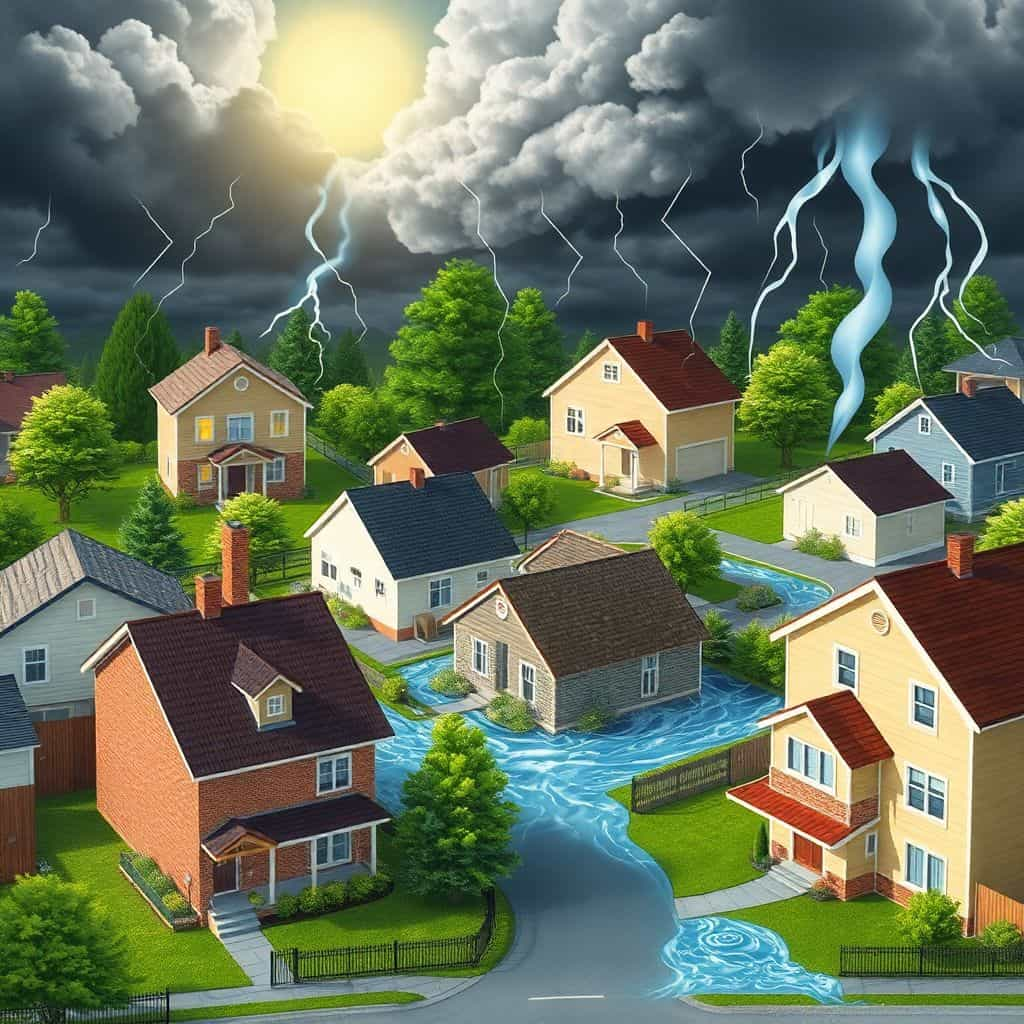In recent years, home insurance has evolved significantly, offering homeowners a plethora of options designed to safeguard their most valuable asset. At first glance, home insurance may appear straightforward, but a deeper look reveals a complex landscape of choices and considerations each homeowner must navigate.
Home insurance, at its core, provides financial protection against damage or loss to one’s home and personal property. Typically, standard policies cover events such as fire, theft, and certain natural disasters. Each policy, however, carries unique terms and conditions, requiring homeowners to scrutinize details meticulously.
When considering home insurance proposals, it’s crucial to understand the range of available coverage types. Basic policies generally include dwelling coverage, personal property protection, liability coverage, and additional living expenses (ALE) coverage. Dwelling coverage protects the physical structure of the home, while personal property protection includes belongings inside the house. Liability coverage safeguards against lawsuits stemming from injuries on the property, and ALE covers the costs of living elsewhere if the home becomes uninhabitable.
Taking a closer look at costs, several factors influence premium rates. Home size, age, and construction type all impact the pricing. Moreover, geographical considerations play a pivotal role. For instance, homes in areas prone to natural disasters like hurricanes or wildfires typically incur higher insurance rates. Regions such as Florida and California are notorious for these risks, influencing premiums significantly.
One must also consider optional coverages, such as flood insurance and earthquake coverage, which are not included in standard policies. These add-ons become essential for homeowners in high-risk areas. According to the National Flood Insurance Program, roughly 13 million Americans live in flood-prone areas, underscoring the importance of obtaining adequate flood coverage.
Historical data offers intriguing insights into home insurance trends. During Hurricane Katrina in 2005, countless homeowners were left destitute without sufficient coverage. The aftermath saw a spike in policy purchases, as homeowners recognized the gravitas of being insured adequately. This historical precedent illustrates the profound impact that unforeseen natural events can impose on the insurance landscape.
Comparisons between insurance proposals illuminate notable differences in coverage and cost. For instance, Policy A from a leading insurance provider might offer extensive dwelling coverage with robust liability protection at a premium rate. Conversely, Policy B might provide essential coverage at a reduced cost but with higher deductibles and limited additional living expense coverage. The devil, as they say, is in the details.
Numerous experts emphasize the importance of understanding deductibles and limits. A deductible is the amount one must pay out-of-pocket before insurance coverage kicks in. Low premiums often mean high deductibles, affecting overall affordability during a claim. Homeowners should also pay attention to coverage limits, ensuring they’re adequate to rebuild or repair the property.
While price is a critical factor, homeowners should not overlook customer service quality. An insurance company’s reputation for handling claims efficiently can significantly affect a policyholder’s experience. Independent reviews and consumer reports can offer valuable insights into an insurer’s reliability and customer satisfaction.
Beyond individual policy benefits, home insurance contributes to peace of mind, assuring homeowners of financial recovery from unforeseen events. The psychological comfort brought by knowing one’s home is protected cannot be overstated, especially in an ever-changing world plagued by climate uncertainties and economic fluctuations.
You may also like
Mortgage Refinancing: Costs and various refinancing options
Mortgage refinancing is a financial strategy that can offer homeowners lower interest rates, reduced monthly payments, or different loan terms. This article explores various refinancing options, discusses associated costs and benefits, and compares offers from different lenders to find the most financially advantageous choice.
Online Mortgages: Offers and option for prospective homeowners
In the digital age, securing a mortgage online is an increasingly popular option for prospective homeowners. This comprehensive guide explores the proposals, costs, and benefits of online mortgages, while highlighting potential pitfalls and regional trends. Key comparisons are made between various offers, detailing interest rates, ancillary costs, and demographic trends.
Credit Cards: Examining costs and security considerations across different geographical regions
The credit card landscape offers various proposals, each with distinct advantages and potential drawbacks. This article delves into the details of credit card proposals, examining costs, benefits, and security considerations across different geographical regions. Additionally, it provides a comprehensive comparison to help consumers make informed decisions.
Online Banking : Offer assistance in choosing the best proposal
The article delves into the realm of online banking, examining proposals, costs, and benefits. It provides an in-depth comparison of various online banking options, offering guidance on selecting the best proposition. The article also assesses the geographical impact of online banking adoption, highlighting specific risks endemic to different areas.
